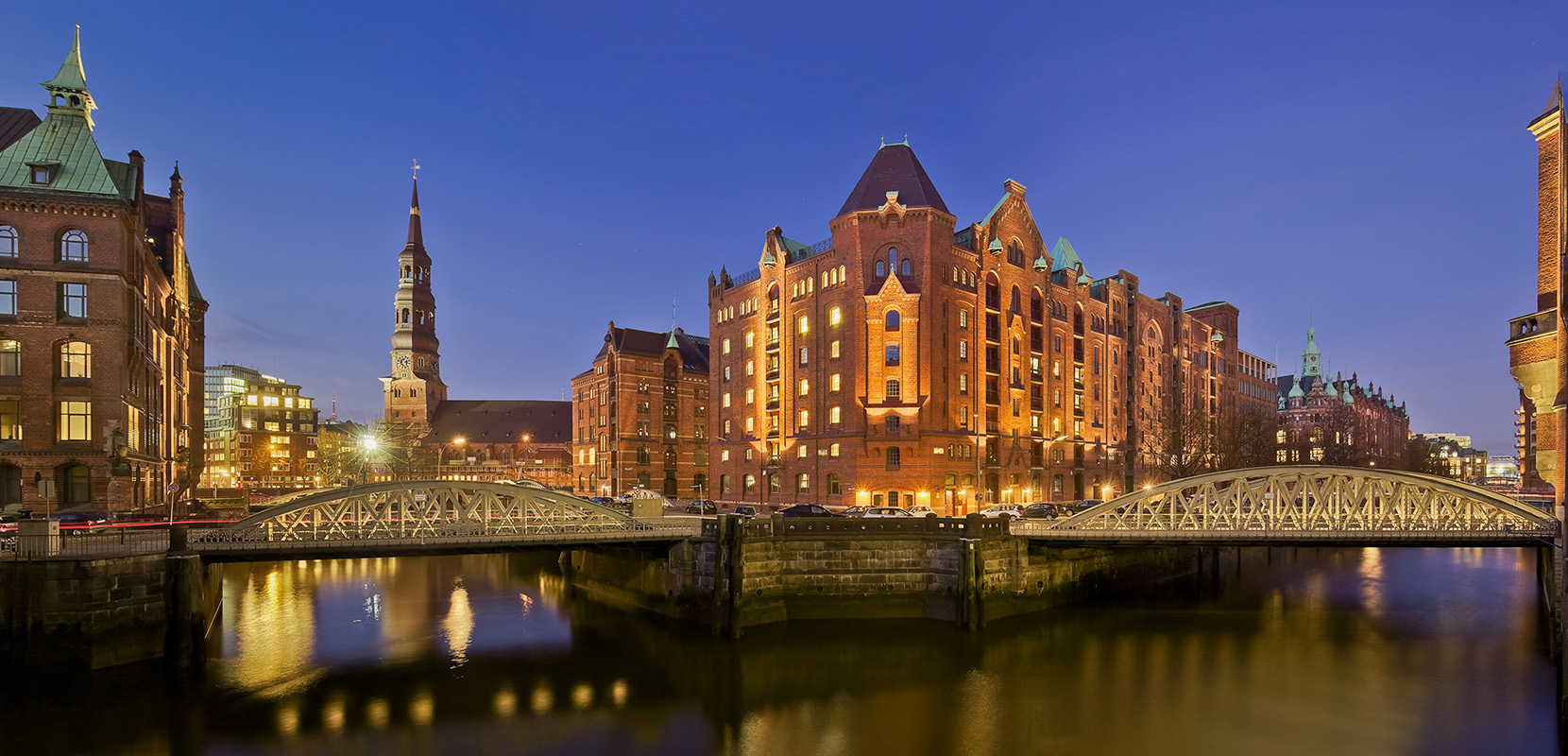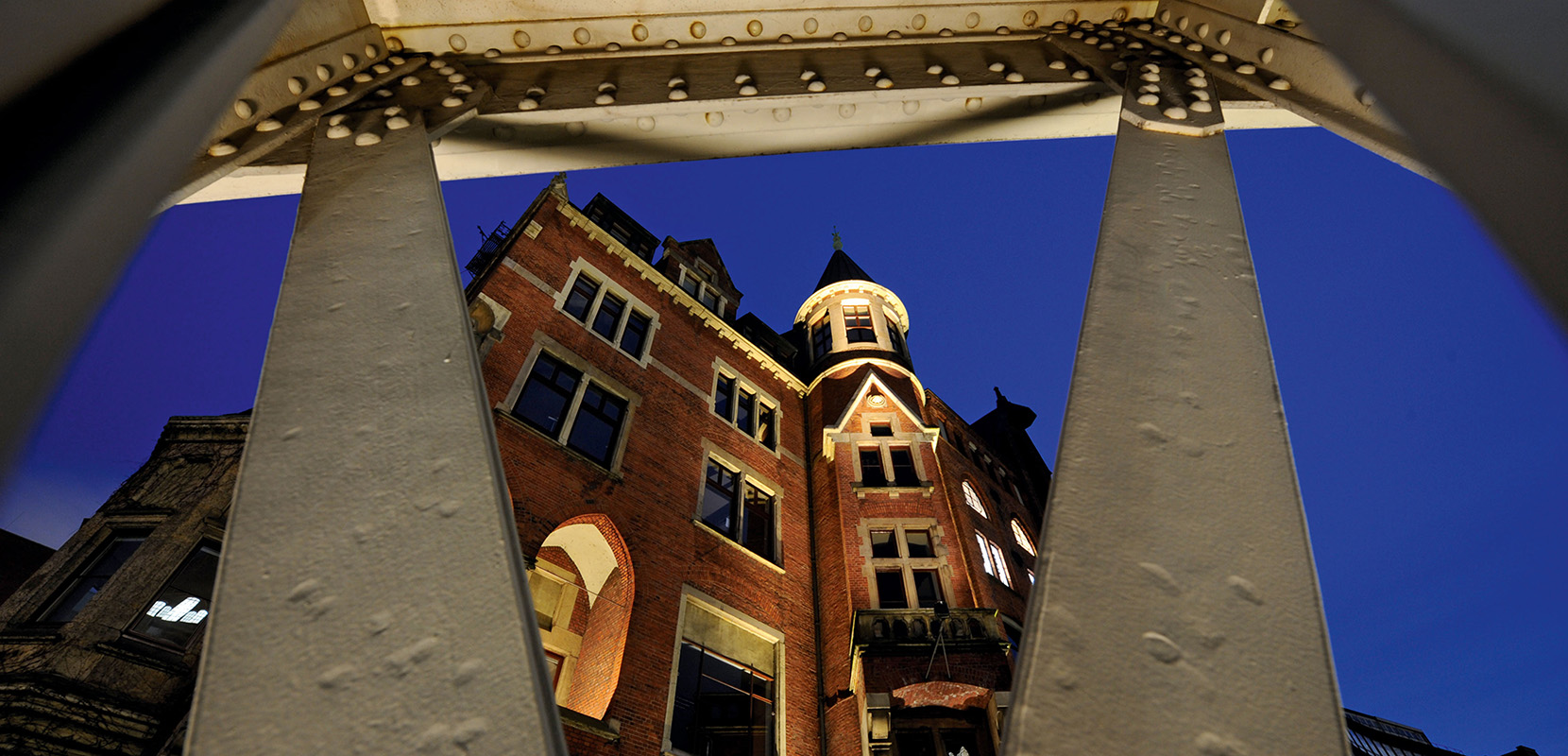Glare is avoided by mounting in luminaires that are suitable for listed buildings and are inconspicuous. The lighting is from the bottom to the top. Horizontal lighting points create the impression of great spatial depth. For this purpose, elaborate plans of the façades for the light distribution were drawn up on the basis of pictures.
The technical realisation is a triumph of low light. The average wattage for the entire Speicherstadt is 24, ranging from 13 watts in the area of the towers to 18 watts for the bridges and 35 watts for the facades. Only in isolated cases have 70 watts been used, for example to set buildings apart from one another. In general, not the two-dimensional but the structuring and sculptural elements have been emphasised. Structure, contour and cubature are the orientation features of the light description. The result is an extremely attractive design of light and dark, i.e. a modelling and picturesque treatment of the building ensemble, whose street names still recall the former neighbourhood of Dutch religious refugees. Thus, from an artistic as well as an art-historical perspective, a homage to the technique of chiaroscuro and its perfection in Dutch painting is quite intentional.
The original use of the buildings as warehouses became the co-author of the lighting design. The inner water axis of the canals, which is no longer used for the delivery of goods, made it possible to restrict the light to a single luminaire in each case, which transported the light along the individual floors up to the winch cover. The projecting parts of the façade with the light-coloured sandstone ends, the worn, rounded edges of the floors and the final round arches of the hatches thus stand out impressively, and the doors that are set back somewhat appear like portals of an entrance. The pictorial and the imaginative are gaining in importance. The memories retain something mysterious that they do not immediately reveal. The Speicherstadt is thus not a landscape of the first, fleeting glance. As a place of stored time, it preserves the richness of its impressions for the viewer who is rewarded for taking time for them.
The model for delivery from the street side, which is still partly active today, is called pairing. On either side of the winch lift, which is still in operation, two outriggers were placed above the public clearance. The overall greater brightness is also due to the location, facing the old town to the north. This is the representative side of the Speicherstadt, situated directly on the Zollkanal, it is developing into a promenade with restaurants, cafés and museums. At the same time, the Speicherstadt is increasingly developing and emphasising its portal function, towards the growing HafenCity, which – separated only by Sandtorkai, world-famous in the coffee trade – lies directly opposite to the south.









